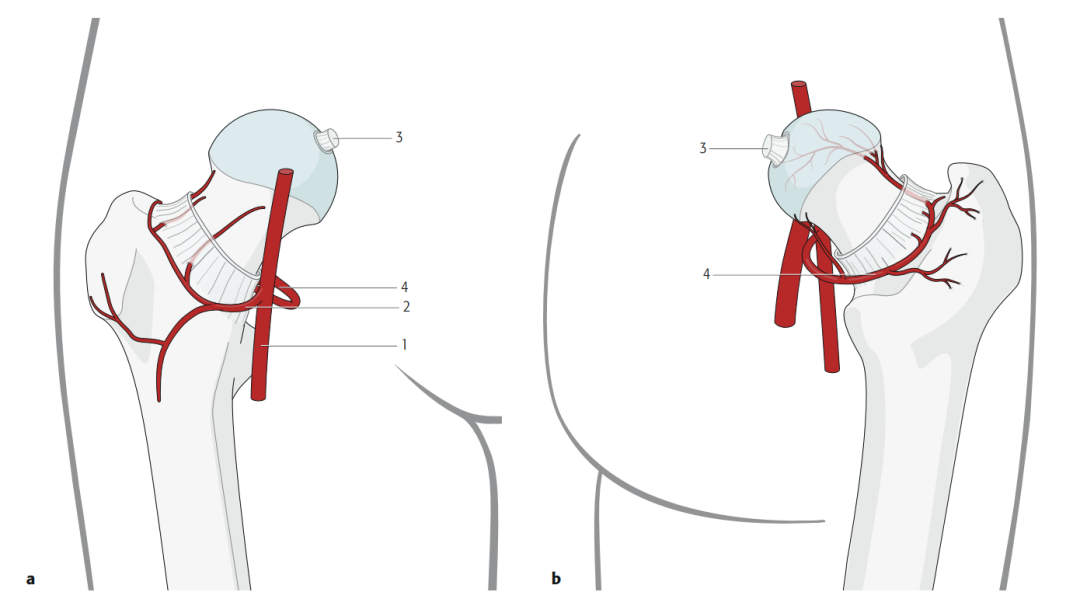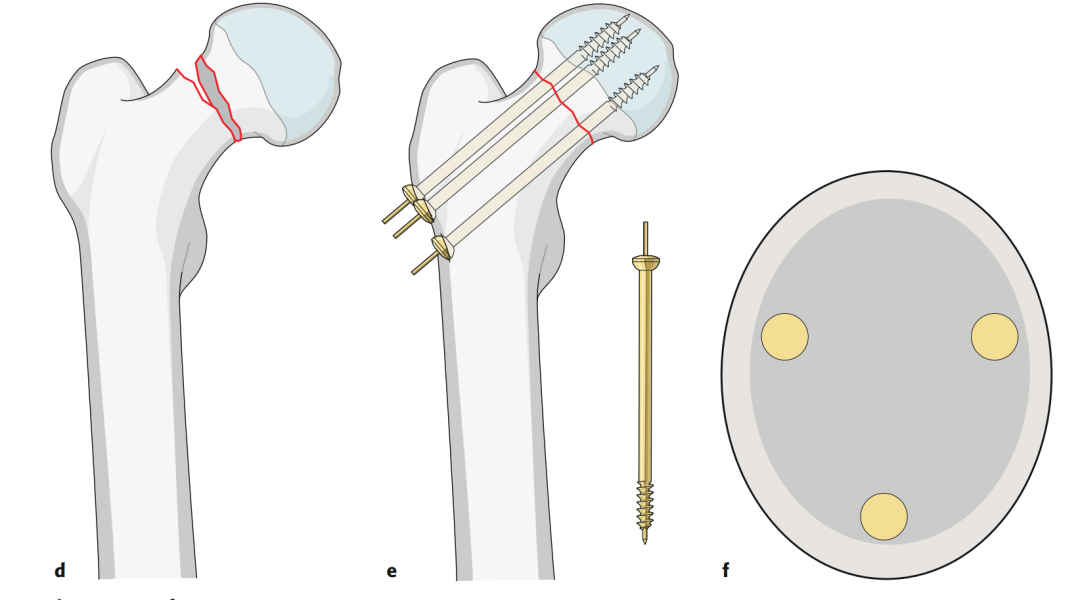Femoral neck fracture is one of the most commonly encountered orthopedic injuries in clinical practice, with the majority of elderly patients accounting for more than 50% of hip fractures. According to statistics, the incidence of femoral neck fractures has gradually increased in recent years, with a higher incidence in women than in men. Vertigo, dementia, malignancy and cardiopulmonary disease in the elderly and high-energy injuries in young people are high-risk factors for femoral neck fractures.
In recent years, many internal fixation materials such as hollow screws, power hip screws (DHS), sliding hip screws (HSH), proximal femoral dissection plates, reconstruction nails, and Gamma nails have emerged. Among these internal fixation materials, hollow screws are the most commonly used. Studies have shown that the vast majority of surgeons prefer hollow screws for treatment of nondisplaced fractures, and a significant proportion of surgeons choose to use hollow screws for displaced femoral neck fractures. 3 parallel partially threaded hollow screw fixation is the more accepted form of internal fixation.
Anatomical features of femoral neck fractures
It is now generally accepted that the vascular structure of the femoral head is the most important factor affecting fracture healing and femoral head necrosis. Damage to the blood supply structures of the femoral head is the main pathological factor of ischemic necrosis of the femoral head. A systematic study of the vascular anatomy of the femoral neck found that the epiphyseal vascular network and the arterial system of the inferior supporting zone may be important structures for maintaining the blood supply to the femoral head after a femoral neck fracture, so that intraoperative drilling and implantation as close as possible to the central region of the femoral head can effectively reduce the possibility of medically induced injury to the intraosseous vascular system.

Figure 1 Blood supply to the femoral head, anterolateral (a) and posterior (b) views. There is variation in the blood supply to the femoral head, but the lateral and medial spinofemoral arteries originate from the deep femoral artery in 60% of patients.
(1) Most of the blood supply to the femoral head comes from the lateral rotor femoral artery.
(2) It gives off 3 or 4 branches that support the strap artery. These branches travel posteriorly and upward along the retroflexed portion of the synovial neck of the femur to the cartilaginous edge of the femoral head. The vessels within the round ligament.
(3) Derived from the foramen occulta artery. Ascending branch of the medial rotor femoral artery.
(4) Supplies the greater trochanter of the femur and forms an arterial ring with the lateral rotor femoral artery.
Hollow screws for femoral neck fractures
Clinically, three hollow cancellous bone screws of 6.5 mm or 7.0 mm or 7.3 mm can be used for fixation in younger patients or in middle-aged or older patients with good bone quality. A guide should be applied to keep the 3 hollow nails parallel to allow for sliding fracture compression. Within the femoral neck, the screws should be screwed in along the edges, taking care that the screws are threaded into the femoral head and not across the fracture line, as this is the only way to obtain inter-end compression. The screws should be tightened and repeatedly confirmed intraoperatively. If a traction bed is used, the traction must be relaxed. Hollow screws can also be placed percutaneously. Frontal, lateral, and 45° oblique fluoroscopy must be performed to ensure that the screws do not penetrate the hip joint.
1、Specific surgical operation techniques.
Take the "inverted triangle" nail placement, which is commonly used in clinical practice, as an example.
a. First of all, under fluoroscopy, use X-ray in two planes of fluoroscopy to determine the layout of the lower and middle guide pins.
b. A skin incision is made that extends 2-3 cm proximally.
c. The fascial layer is separated along the incision and a Cobb separator is used to separate the longitudinal fibers along the lateral femoral muscle.
d. Place the guide needle in a position where both planes are perfect.
e. One guide pin was placed along the anterior aspect of the femoral neck with an assistant to determine the anterior tilt angle.
f. After fixation of the first guide pin, the posterosuperior and anterosuperior guide pins are identified using parallel guides to obtain posterior and anterior cortical support within the femoral neck.
g. This is done by inserting a guide pin above the lesser trochanter along the distal femoral neck cortex via the femoral spine; the next two guide pins are inserted proximally in a parallel fashion, as far up as possible and 5 mm from the anterior and posterior cortex; the depth of entry of the guide pin is then adjusted to reach 5 mm below the cartilage; finally, the hole is reamed, measured, and a pressurized hollow screw is screwed in.
h. Make sure not to enter the needle below the lesser trochanter and travel proximally along the femoral spine.
i. Make sure that the threaded guide pin is positioned underneath the joint.
j. Do not allow the guide pin to penetrate the articular surface.
k. Determine the appropriate screw length by measuring the guide pin length and then removing 5 mm.
l. Usually self-tapping, self-drilling screws are used, but sometimes pre-drilling of the lateral cortex is required in loyal patients with thick bone.
m. If space permits, a spacer may be used.
n. A 4th screw (diamond arrangement) may be necessary for loyalists with severe comminuted fractures of the posterior aspect of the hand.

Although hollow screws for femoral neck fractures are now very common, there are still differences of opinion regarding the number and configuration of surgically placed hollow screws, usually depending on the operator's preference; factors such as the patient's bone density, screw strength, and success of treatment also have an impact.
1、Number of hollow screws.
Femoral neck fractures are usually fixed with 2-4 hollow screws.
In most cases, 3 screws are used because they can withstand strong anterior stresses, increase stability, and reduce displacement of the fracture end.
For femoral neck fractures with a Pauwells angle >50°, 2 screws are more reasonable.
In patients with severe comminuted fractures of the posterior femoral neck, 4 hollow screws have been advocated.
However, the prevailing practice is still to use 3 hollow screws for fixation.
2、Configuration of hollow screw.
When 3 hollow screws are used for internal fixation of femoral neck fracture, it is generally believed that the theory of "sliding compression" should be followed, so that the 3 screws implanted are parallel to each other in the orthogonal view and have a triangular configuration in the lateral view.
In this way, the three parallel hollow screws can provide good mechanical support and form a sliding track, so that the fracture block can slide along the femoral neck axis under the contraction of the hip muscles, creating pressure at the fracture end and promoting fracture healing.
However, whether the 3 hollow screws are laid out in an orthotriangular or inverted triangular configuration has been controversial.
Advances in hollow screw fixation technique for femoral neck fractures
Yuenyongviwat et al. designed a new adjustable parallel drilling guide for the placement of hollow screws in the treatment of femoral neck fractures by internal fixation, and found that this new guide could reduce the operative time and the number of intraoperative fluoroscopic views compared with the traditional method, thus achieving satisfactory surgical results.
Filipov et al. designed a biplane double-supported screw fixation (BDSF), in which the entry point of three hollow screws is located in the thick cortical area of the proximal femoral stem, and the three screws are evenly offset to the periphery of the femoral head, thus forming two planes. This approach allows for double cortical support, thus providing adequate fixation strength during movement.
Biomechanical experiments using cadaveric specimens showed that the BDSF fixation method provides better fixation than the traditional inverted triangle fixation method. The results of biomechanical experiments using cadaveric specimens showed that calcium phosphate cement reinforced hollow screw fixation significantly improved the stability of hollow screw fixation of femoral neck fractures, enhanced the compression resistance of the femoral neck, and improved torsional stiffness, which is of great clinical value.
Because of the high possibility of femoral head necrosis after hollow nail fixation for femoral neck fractures, other methods have been continuously used to assist hollow nail internal fixation to reduce complications such as femoral head necrosis. The root cause of femoral head necrosis after femoral neck fracture is the loss of blood flow to the femoral head, so the focus of treatment is on how to improve blood flow. The introduction of a blood-supplied periosteum graft into the necrotic area of the femoral head and the outward filling of the residual cavity by the germinating layer will facilitate the differentiation of the grafted periosteum into osteoblasts as well as the regeneration of vascular sprouts, which has both osteogenic and revascularizing effects.
Summary
Hollow screw fixation for femoral neck fracture is a very effective fixation method, which has the advantages of simple operation, short operation time, little trauma, reliable fixation and fast postoperative recovery. However, due to the anatomical characteristics of femoral neck fractures, the complications of ischemic necrosis of the femoral head and non-union of the fracture can still not be completely avoided by internal fixation for femoral neck fractures. Therefore, the indications for the use of this fixation method need to be clarified before use, and elderly patients with severely displaced femoral neck fractures and poor general status requiring early activity should avoid using internal fixation for femoral neck fractures as much as possible. The risk factors affecting the patient's prognosis, such as the type of fracture, bone density, and the patient's functional status, should also be taken into consideration to reduce the long-term postoperative complications and thus improve the treatment outcome of femoral neck fractures.
How to Buy Orthopaedic Implants and Orthopaedic Instruments?
For CZMEDITECH, we have a very complete product line of orthopedic surgery implants and corresponding instruments, the products including spine implants, intramedullary nails, trauma plate, locking plate, cranial-maxillofacial, prosthesis, power tools, external fixators, arthroscopy, veterinary care and their supporting instrument sets.
In addition, we are committed to continuously developing new products and expanding product lines, so as to meet the surgical needs of more doctors and patients, and also make our company more competitive in the whole global orthopedic implants and instruments industry.
We export worldwide, so you can contact us at email address song@orthopedic-china.com for a free quote, or send a message on WhatsApp for a quick response +86-18112515727.
If want to know more information,click CZMEDITECH to find more details.
English
Français
Русский
Español
العربية
Português
Deutsch
italiano
日本語
한국어
Nederlands
Tiếng Việt
ไทย
Polski
Türkçe
አማርኛ
ພາສາລາວ
ភាសាខ្មែរ
Bahasa Melayu
ဗမာစာ
தமிழ்
Filipino
Bahasa Indonesia
magyar
Română
Čeština
Монгол
қазақ
Српски
हिन्दी
فارسی
Kiswahili
Slovenčina
Slovenščina
Norsk
Svenska
українська
Ελληνικά
Suomi
Հայերեն
עברית
Latine
Dansk
اردو
Shqip
বাংলা
Hrvatski
Afrikaans
Gaeilge
Eesti keel
Māori
नेपाली
Oʻzbekcha
latviešu
অসমীয়া
Aymara
Azərbaycan dili
Bamanankan
Euskara
Беларуская мова
भोजपुरी
Bosanski
Български
Català
Cebuano
Corsu
ދިވެހި
डोग्रिड ने दी
Esperanto
Eʋegbe
Frysk
Galego
ქართული
guarani
ગુજરાતી
Kreyòl ayisyen
Hausa
ʻŌlelo Hawaiʻi
Hmoob
íslenska
Igbo
Ilocano
Basa Jawa
ಕನ್ನಡ
Kinyarwanda
गोंगेन हें नांव
Krio we dɛn kɔl Krio
Kurdî
Kurdî
Кыргызча
Lingala
Lietuvių
Oluganda
Lëtzebuergesch
Македонски
मैथिली
Malagasy
മലയാളം
Malti
मराठी
ꯃꯦꯇꯥꯏ (ꯃꯅꯤꯄꯨꯔꯤ) ꯴.
Mizo tawng
Chichewa
ଓଡ଼ିଆ
Afaan Oromoo
پښتو
ਪੰਜਾਬੀ
Runasimi
Gagana Samoa
संस्कृत
Gaelo Albannach
Sepeti
Sesotho
chiShona
سنڌي
Soomaali
Basa Sunda
Wikang Tagalog
Тоҷикӣ
Татарча
తెలుగు
ትግንያውያን
Xitsonga
Türkmençe
संस्कृत
ئۇيغۇرچە
Cymraeg
isiXhosa
ייִדיש
Yorùbá
isiZulu












